From Catholic priest to an agnostic: Here's why Thomas Nangle cut all ties with his homeland
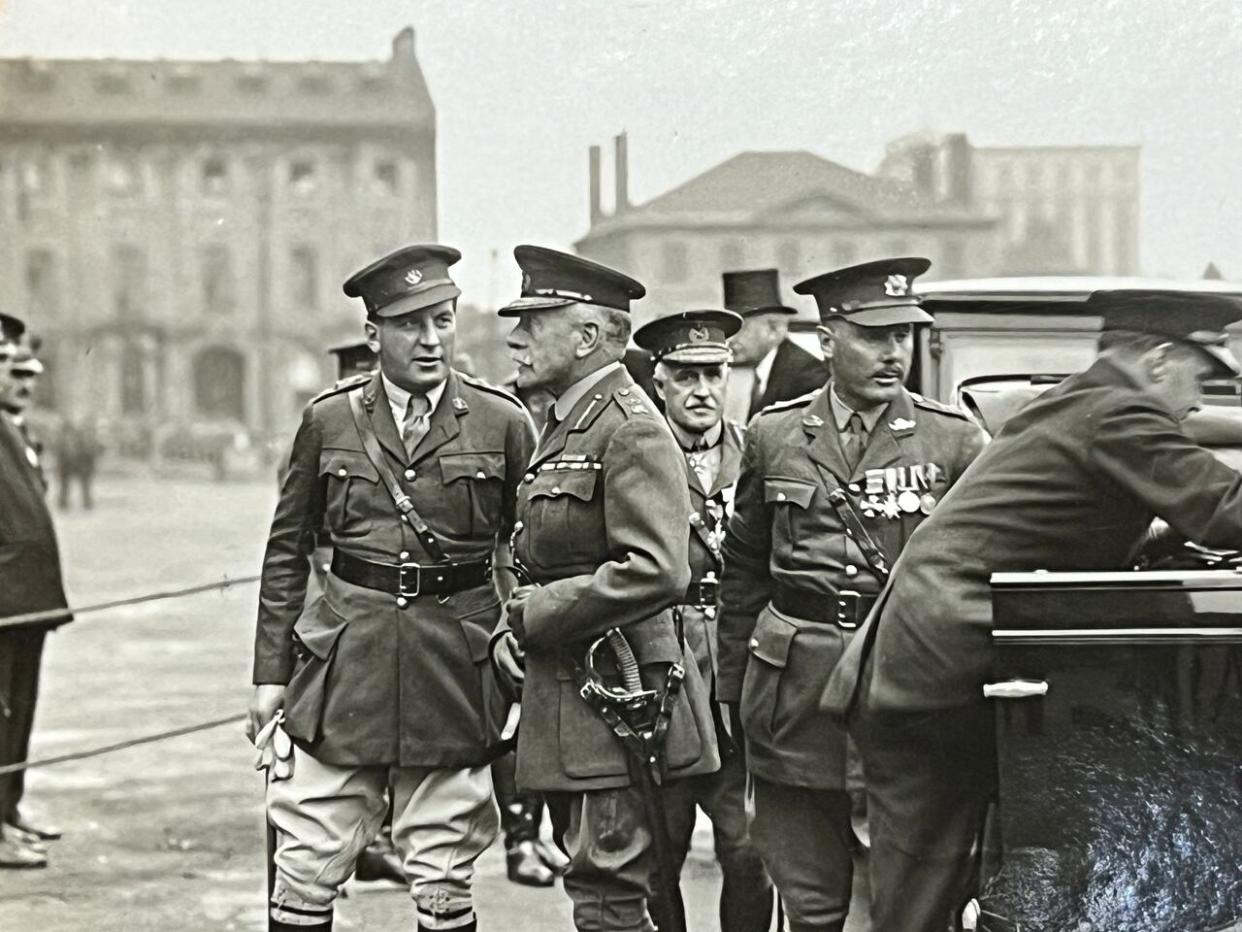
The name Thomas Nangle has been thrust into the spotlight in recent weeks as historians, politicians and veterans heaped praise on the former Catholic priest and wartime padre for his service to the Royal Newfoundland Regiment and his post-war efforts to commemorate those whose lives were lost in the First World War.
Nangle is described as the engine that powered the Newfoundland National War Memorial in St. John's to completion on July 1, 1924.
He was also the driving force behind the five Trail of the Caribou monuments along the Western Front, including the Beaumont-Hame Newfoundland Memorial in northern France.
He also had the gruesome task of locating, exhuming, identifying and reinterring the remains of Newfoundland soldiers — many of whom he knew prior to the war, and comforted and encouraged as they faced the perils of battle — who died on the battlefields of Europe in the years following the armistice in November 1918.
There's been very little discussion, however, about why a man who played such a prominent role in Newfoundland during such a painful period in its history suddenly left his homeland, changed his life so completely, settled on the other side of the world, and never returned.
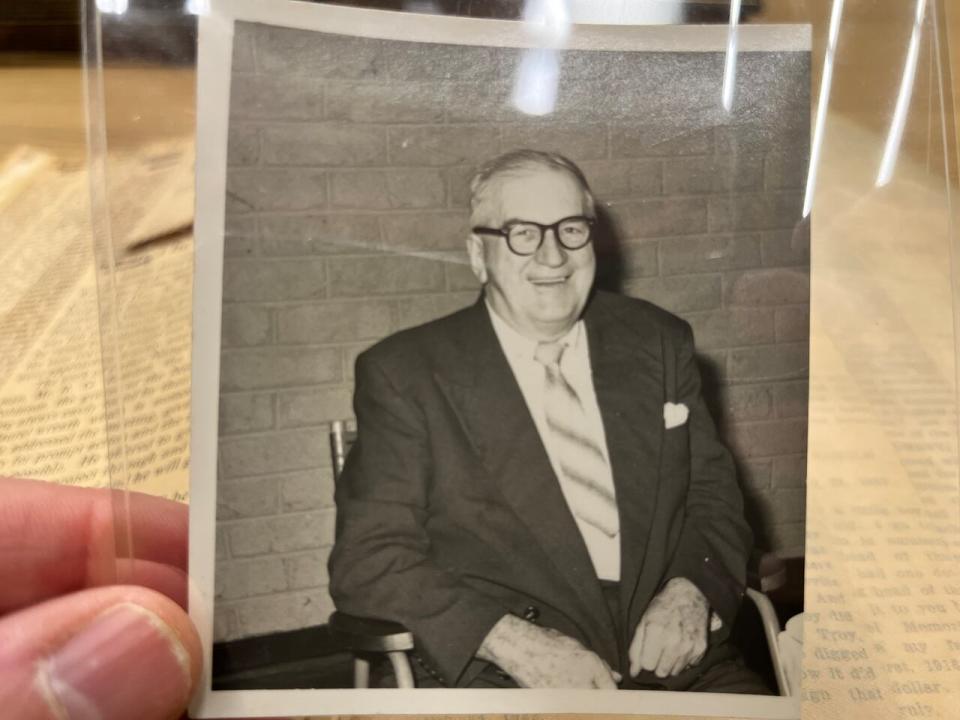
But a letter that's been buried deep in the archives at Memorial University for about three decades has emerged, and it reveals in candid detail why Nangle vanished, and why his important contributions may have been largely overlooked for so many decades.
In 1926, just two years after an estimated 20,000 people gathered in downtown St. John's to see British Field Marshal Douglas Haig dedicate the war memorial, Nangle left Newfoundland.
He also left the priesthood and eventually settled in Rhodesia — known today as Zimbabwe — in southern Africa, about 11,000 kilometres from Newfoundland.
He received a grant of land, became involved in everything from farming and newspaper publishing to mining and politics, and became known widely as "Tim" instead of his given name, Thomas. He got married, and raised four children.
He died in early 1972 at the age of 83.
WATCH | Terry Roberts digs into the mystery of why the driving force behind the National War Memorial left Newfoundland for good:
But a decade or so before he died, Nangle sent some of his personal records back to Newfoundland, to then premier Joey Smallwood.
The records were turned over to Memorial's archives and special collections division about 30 years ago, but with the 100th anniversary of the National War Memorial approaching, interest in Nangle's old photo albums and scrapbooks was renewed, and they were dusted off.
That's when archivist David Mercer discovered a letter written by Nangle to Smallwood in 1960, some 34 years after he left Newfoundland. The letter hints at some type of relationship between Nangle and Smallwood, with Nangle thanking the premier "for all the trouble you have taken on my behalf."
Fear of being 'a living hypocrite'
Nangle begins the letter by commenting on Smallwood's earlier career with the Evening Telegram, writing that he remembered Smallwood as a "cub reporter" with the newspaper who was "raising hell with the stuff shirts."
It appears Nangle's letter is in reply to an earlier letter from Smallwood, with Nangle writing, "Yours is the first letter I've had from Newfoundland for about thirty five years."
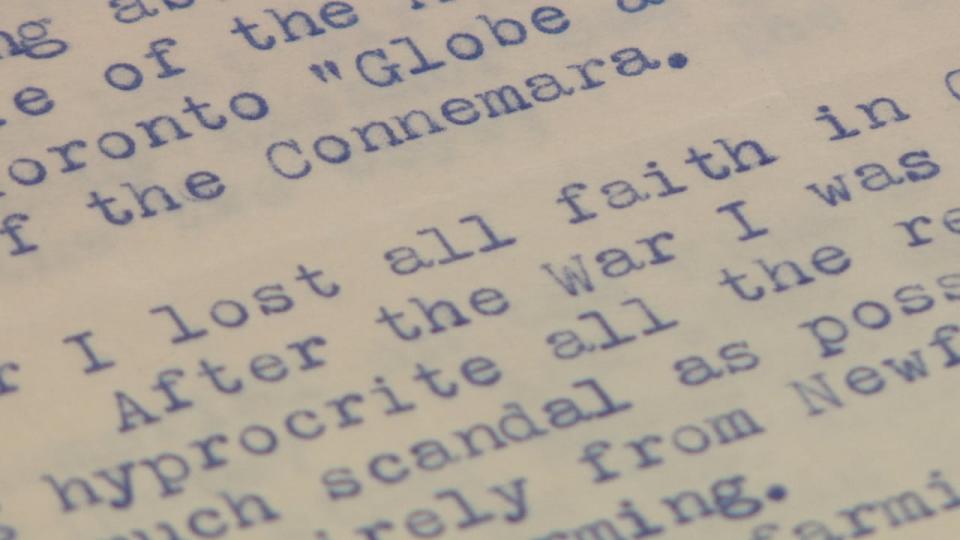
It's in the fourth paragraph that Thomas Matthew Mary Nangle reveals some very personal information:
"During the war I lost all faith in Christianity and became an agnostic," Nangle writes.
"After the war I was faced with the choice of being a living hypocrite all the rest of my life or clearing out to avoid as much scandal as possible. I chose the later and cut adrift entirely from Newfoundland."
Here's how Mercer interprets Nangle's explanation for leaving St. John's:
"As a former priest living in St. John's under the scrutiny of the church and the strong religious community of St. John's at the time, it would have made things very difficult for him, I would imagine. So best to move away, to leave the province, start afresh, live your life in peace," said Mercer.
"What he would have experienced at that time just to me seems to be pretty horrific."
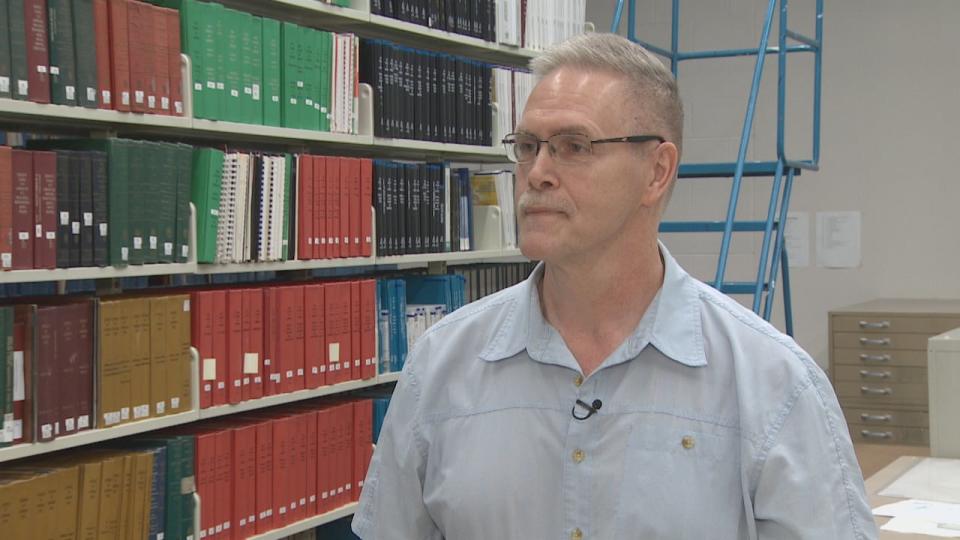
St. John's researcher and author Gary Browne, meanwhile, is not surprised by the letter's contents.
Browne, who co-authored a 2006 book about Nangle called Soldier Priest, got to know some of Nangle's children during his research.
Nangle was traumatized by his experiences during and after the war, had a fractious relationship with church leaders of that era, and likely felt the only way to find contentment was outside Newfoundland, said Browne.
"How could he come back and stay in the priesthood and stay in among these parishioners whom he loved when now he was questioning all of this in his own mind as an agnostic?" Browne asked.
Regrets of recruitment
Nangle also had deep regrets about undertaking recruiting efforts during the war, Browne said.
"His son Hugh told me that that really upset his father because he was the rest of his life knowing that he recruited … a number of these young people who went over. Then he administered to them. Then he had to bury some," Browne said.
"And then for four or five years after the war was over, he had to look for their bodies."
Nangle turned down invitations over the years to visit his homeland, but Browne can't help but wonder what Nangle may have accomplished if he'd remained in Newfoundland.
"I could see him easily becoming a prime minister of Newfoundland when we were in independent country. He wasn't someone that could be kept down easy."
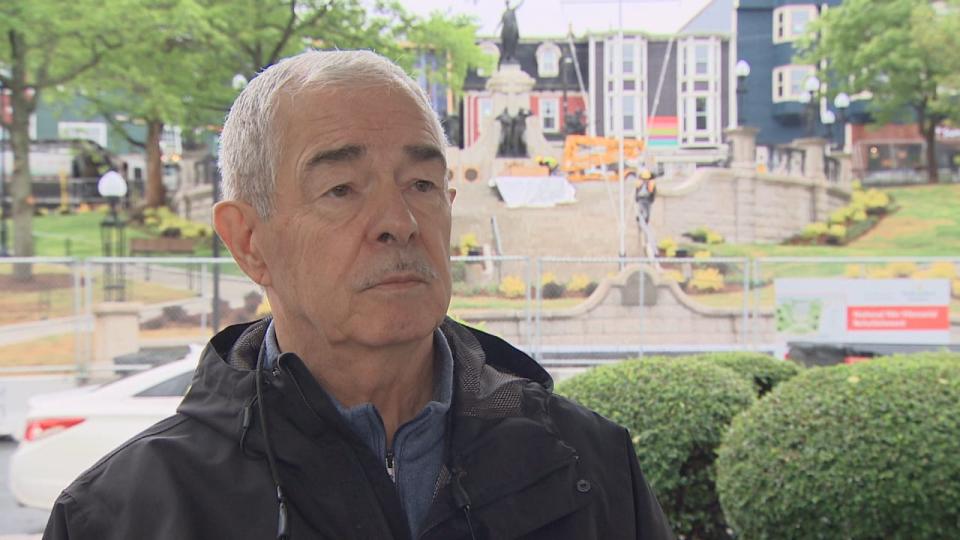
Nangle may have cut himself adrift from Newfoundland, but his legacy is as strong as ever, with Parks Canada naming Nangle as a person of national historical significance in 2016.
The refurbished Newfoundland National War Memorial was rededicated Monday on the 100th anniversary of its unveiling by Field Marshal Haig.
Nangle's dream of establishing a Tomb of the Unknown Soldier was also finally realized, with the reinterring of a Newfoundland soldier who died more than a century ago, placed inside a new burial chamber of granite and Labradorite.
Meanwhile, Browne's research indicates Nangle rediscovered his Christian faith in the final years of his life.
Download our free CBC News app to sign up for push alerts for CBC Newfoundland and Labrador. Click here to visit our landing page.


